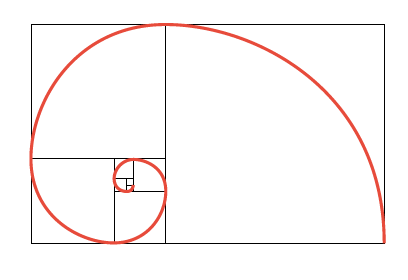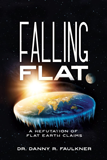
The Golden Ratio: Curious Connections in Creation
What do sunflowers, the Parthenon, a snail, the Great Pyramids, and you all have in common? The golden ratio.
You can spot the golden ratio in the swirl of a galaxy, the arch of an ocean wave, the tail of a seahorse, and innumerable other places in nature.
It’s found in paintings, sculptures, and buildings. In fact, some people believe that man-made designs that incorporate the golden ratio are more aesthetically pleasing.
You can even find the golden ratio in the helix of your DNA, the pattern of your heartbeat on a heart monitor, your facial structure, and the spiral of your ear.
What Is the Golden Ratio?
In mathematics, two quantities are in the golden ratio if their ratio is the same as the ratio of their sum to the larger of the two quantities. Put simply, it’s a math term also called by its Greek letter phi (φ), which refers to an irrational number approximating 1.618.
It is the ratio of successive numbers that converge to phi (φ) in the Fibonacci sequence, a term you might have learned in high school or college math. The Fibonacci sequence follows a simple formula:
0 + 1 = 1
Now take that sum and add it to the second number in the equation.

Fibonacci Sequence
No matter how long you follow the formula of adding the sum to the second number in the equation, the sequence continues.
Now, if you divide two successive Fibonacci numbers, their ratios converge to the golden ratio, or phi (φ).
1, 1, 2, 3, 5, 8, 13, 21, 34, 55, 89, . . .
For instance 89÷55 approximates phi (φ)

Golden Ratio
Golden Rectangle
To understand the golden ratio, look at the golden rectangle. A golden rectangle has sides with measurements equaling the ratio phi (φ). Within that rectangle, you can section off a perfect square. The resulting rectangle has the same proportions as the original rectangle. In the new smaller rectangle, you can section off another perfect square, and the remaining rectangle will have the same proportions as the original rectangles.

Golden Rectangle
Golden Spiral
Dividing the golden rectangle into perfect squares creates the blueprint for the golden spiral, another visual representation of the golden ratio. As the golden ratio divides, the golden spiral curves fill each square in the same ratio of space. The spiral can continue inward and outward, retaining the same proportions, just like the rectangle.

Golden Spiral

Cross Section of a Nautilus

Proportions of the Face

Fiddlehead of a Fern

A Spiral Galaxy
Just a Coincidence?
Many mathematicians argue that people have exaggerated the golden ratio, fudging measurements and simply estimating to find it more frequently than it actually appears.
But the golden ratio is undoubtedly and repeatedly present in creation. Such recurrences make sense in light of a common Designer. Just as you can identify the work of a painter by his style, you can find “fingerprints” of our Designer in all aspects of his creation.
For his invisible attributes, namely, his eternal power and divine nature, have been clearly perceived, ever since the creation of the world, in the things that have been made. (Romans 1:20)
Answers Magazine
March–April 2020
The Riot and the Dance films are reclaiming the nature documentary genre for the Creator’s glory.
Browse Issue SubscribeRecommended Resources

Answers in Genesis is an apologetics ministry, dedicated to helping Christians defend their faith and proclaim the good news of Jesus Christ.
- Customer Service 800.778.3390
- © 2024 Answers in Genesis






